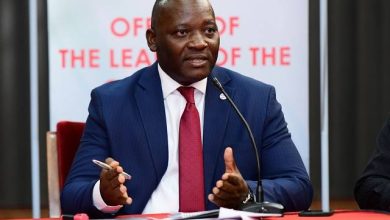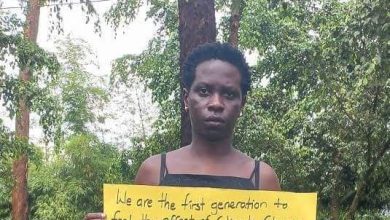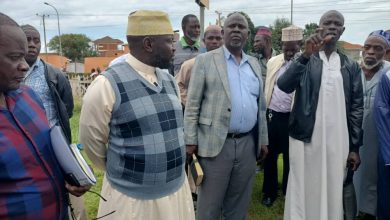Linking Christianity Environment And Development In Uganda
Most Churches Are As Free Of Trees As The Clean-Shaven Head Of An Old Man Who Hates Showing His Grey Hair, As If That Brings His Age Down
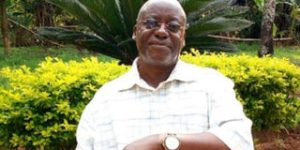
Uganda Today: Linking Christianity, Environment and Development in Uganda.
By Oweyegha-Afunaduula
22 September, 2023
When I agreed to the invitation by Prof. Wangoola Wangoola in 1994 to address the Colloquium of Bishops of Uganda at Lweza on the topic “Linking Christianity, Environment and Development in Uganda”, I knew my audience, which included the late Archibishop of the Church of Uganda, Livingstone Nkoyoyo, was the right one to begin christian environmental activism.
The reason was that most ecologically and environmentally ignorant, environmentally corrupt and environmentally bankrupt Ugandans are Christians of the Church of Uganda. They predominate in government, Parliament, Judiciary and all our institutions – public and private. They also predominate in the destruction of the environment, which includes everything: humanity, forests, lakes, rivers, natural resources, wildlife, etc. They have been de-linked by colonialism and colonial education from their environmentally and ecologically conscious cultures.
They make the most environmentally and empty policies and laws.
So, when Prof. Wangoola Wangoola came to my residence at Ssemakokiro Flats to pray with me that I should find time to exert impact on the topmost clergy in the Church of Uganda, I did not resist. I was convinced that if all the churches and the sheep of the Church of Uganda were involved in conservation of our environment, there would be an environmental revolution in the country. I hoped that Prof. Wangoola Wangoola had plans to organize similar interactions with the Muslim and Catholic clergy, but learn’t that his resources were limited.
Anyway when the day for my talk came, I found the venue full of people in red or pink robes with white collars waiting, eager to hear how I was going to link their faith to environment and development.
I found the late Bishop of Busoga, Cypriano Bamwoze was the one tasked to chair my talk, which he did very well. The talk was preceeded by praying to God to give me the necessary knowledge, wisdom, understanding and insight to make the interaction with the Clergy reawrding environmentally and developmentally for the Church.
While we were praying, I said to myself, “But God has never held his knowledge, wisdom, understanding and insights from me. He desires that I use them to register the support of his Church to conserve his Creation”.
After opening the interaction, Archibishop Nkoyoyo gave the Bishop of Busoga the go ahead to guide the delivery and the ensuing debates.
I thanked Prof Wangoola Wangoola, with whom I am in touch from time to time, for convincing the Bishops that I was the most suited to deliver the message home under the topic at the time. I thanked the Bishops for making sure that they were all present. For me it was like I was surrounded by the Angels of God.
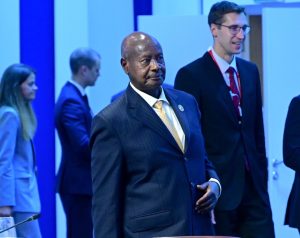
It was a lively interaction with emphasis on the following:
1. The value of faith in conservation.
2. Spiritual leadership should go hand in hand with environmental conservation leadership
3. The Clergy has a critical role to play in environmental conservation, since our Spirit s are only tranquil in a tranquil environment.
4. The only meaningful development is environmental development. Other types of development, including spiritual development should be pursued as dimensions and integral aspects of environmental development, and must be in balance with each other.
5. Members of the Church of Uganda are the greatest adversaries of environmental development.
6. The penetration of the Church by presidential gifts of vehicles is likely to jeopardize the effectiveness of the Church in spiritual and environmental development, for that matter. The vehicles can end up being tools of the political corruption of the Church.
7. Environment is a tool and a means of development only if taken as such and not as something outside there for exploitation to satisfy our needs and ends in life.
8. The Church can be pivotal in building the necessary ethics and morality of the conservation of the environment. It has a big following, all the time demanding ethical and moral guidance spiritually and environmentally.
9. The Church must be at the forefront of environmental renewal as it should be for spiritual or faith renewal.
10. With the wicked problems of environmental decay and collapse, and climate change ever spiraling upwards, the Church must initiate a nationwide tree-planting programme similar to that of Prof Mathaai Wangari in Kenya. Every Church, small and big must have it’s members plant trees on the compounds and surroundings of the Church. However, they should desist from planting the foreign trees of Cypress and Eucalyptus. These are best suited to the cold North and dry South deserts. Even when you plant them their stands are like biological deserts because nothing else will thrive in them.
Several years later, most churches are as free of trees as the clean-shaven head of an old man who hates showing his grey hair, as if that brings his age down.
I was happy this morning to hear on a local FM Radio station in Busoga, Radio Busoga One, that Bishop Mukembo Naimanhye of Busoga, is initiating a tree-planting programme in the subregion.
As an environmentalist I cannot resist applauding him and spurring him on. The trees to be planted should exclude Eucalyptus and Cypress. Eucalyptus is efficient at draining water away by its deep-seated roots. Cypress is efficient in doing the same via its small leaves. Therefore, instead of helping us to fight environmental degradation, climate change and desertification, they accelerate the wicked problems of our time.
I have pointed out before that the ground is a seed reservoir. Seeds of trees that existed even 3000 years ago are buried in the Soil profile up to 6 feet deep waiting to be recovered, the same way we recover water from the ground to erect boreholes and wells. A sustainable tree-planting programme should include a project of seed recovery from different parts of Busoga. It is worthwhile as a means to recover our lost trees and discourage the foreign trees imposed in our environment.
For God and My Country


